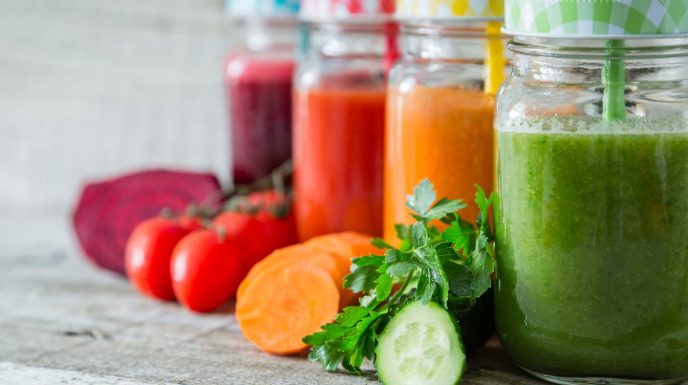Blending veggies may lose some nutrients due to factors like time, speed, and exposure. Yet, it still provides nutrition. Use shorter blending, lower speeds, and consume promptly. Both whole and blended veggies are beneficial.
Blending vegetables has become a popular way to incorporate more nutrients into our diets. However, concerns have arisen regarding the potential loss of essential nutrients during the blending process. In this article, we delve into the question: does blending vegetables destroy nutrients?
We explore various factors that influence nutrient retention and provide practical tips to preserve the nutritional value of blended vegetables. So, let’s dive in and discover how to optimize the nutrient content of your blended creations!
Does Blending Vegetables Destroy Nutrients: A Comprehensive Guide

We must explore the science behind nutrient loss to understand whether blending vegetables affect their nutrient content. When blended, vegetables undergo physical and chemical changes that can impact their nutritional composition. However, the extent of nutrient loss varies depending on several factors, including:
- Blending Time and Speed
- The duration and speed at which vegetables are blended can affect nutrient retention. Prolonged blending and high-speed settings may generate heat and cause oxidation, leading to nutrient degradation.
- Exposure to Air and Light
- Exposure to air and light during the blending process can accelerate nutrient degradation. Certain vitamins, such as vitamin C, are particularly susceptible to oxidation when exposed to oxygen.
- Temperature Changes
- Blending vegetables at high speeds can generate heat, which may lead to nutrient loss. Heat-sensitive vitamins, such as vitamin C and B complex, are more prone to degradation under elevated temperatures.
Read Also: What Vegetables Should Not Be Juiced? Don’t Juice These 5 Veggies or Regret It!
Optimal Blending Techniques for Nutrient Preservation
While blending vegetables may cause some nutrient loss, there are several techniques you can employ to minimize this effect. By following these guidelines, you can maximize the nutritional value of your blended vegetables:
- Blend in Short Bursts
- Instead of blending continuously, try blending in short bursts. This approach reduces the overall blending time, minimizing nutrient degradation caused by prolonged blending.
- Use Low-Speed Settings
- Opt for lower speed settings on your blender to minimize heat generation. High speeds can lead to increased temperatures, which may contribute to nutrient loss.
- Prevent Excessive Oxidation
- To prevent oxidation, blend vegetables in smaller batches and consume the blended mixture immediately. Alternatively, store the mixture in airtight containers in the refrigerator for short periods to limit exposure to air and light.
- Consider Blending with Cold Ingredients
- Blending vegetables with chilled ingredients, such as ice or cold water, can help maintain lower temperatures during blending. This can be particularly beneficial for preserving heat-sensitive nutrients.
Does Blending Affect Specific Nutrients?
To fully understand the impact of blending on nutrient preservation, let’s explore the effects on specific vitamins, minerals, and other essential compounds:
- Vitamin C
- Blending vegetables can lead to a reduction in vitamin C content due to oxidation. Incorporate vitamin C-rich ingredients like citrus fruits into your blends to mitigate this. Additionally, consuming the blended mixture immediately after preparation can help maximize vitamin C retention.
- Vitamin B Complex
- The B vitamins, including thiamin, riboflavin, niacin, and folate, are heat-sensitive and can be partially degraded during blending. To retain these essential nutrients, choose shorter blending times and lower speeds.
- Antioxidants
- Many vegetables contain antioxidants that contribute to their health benefits. While blending can cause some antioxidant loss, incorporating a variety of colorful vegetables into your blends can help ensure a diverse range of antioxidants.
- Minerals
- Blending vegetables does not significantly affect mineral content. However, if you consume the entire blended mixture, you’ll benefit from the minerals present in the vegetables.
Read Also: The 10 Best Vegetables for Juicing: A Comprehensive List
Nutrient breakdown in blended vegetables
When blending vegetables, the nutrient breakdown is a fascinating process that can enhance their bioavailability. The mechanical action of blending breaks down the cell walls of the vegetables, releasing nutrients and making them more easily digestible. This can be especially beneficial for individuals with digestive issues, as it allows for greater absorption of essential vitamins and minerals.
Additionally, the blending process can impact the release of antioxidants in vegetables. Research suggests that blending may increase antioxidant availability by breaking down plant cell walls and promoting better extraction of these beneficial compounds. This means that consuming blended vegetables could potentially provide a higher concentration of antioxidants compared to whole vegetables, offering added health benefits. Overall, while there may be some loss of certain nutrients due to oxidation during blending, the improved bioavailability and release of antioxidants indicates that blending vegetables does not necessarily destroy their nutrients but rather enhances their nutritional value.
Impact of blending on fiber content
The impact of blending on fiber content in vegetables is a topic that has gained significant attention in recent years. While some believe that blending may reduce the fiber content of vegetables, research suggests otherwise. Blending actually breaks down the cell walls of vegetables, making the fiber more accessible and easier for the body to absorb. This means that while whole vegetables contain insoluble fiber, blended vegetables may provide a more easily digestible form of soluble fiber, which offers various health benefits such as supporting gut health and reducing cholesterol levels.
Additionally, by breaking down the cellular structure of vegetables through blending, it allows for a higher extraction of nutrients including vitamins, minerals, and antioxidants. This can be especially beneficial for individuals who struggle to consume enough whole fruits and vegetables in their diet. The increased bioavailability of nutrients from blended vegetables can contribute to overall well-being and may support optimal health. Therefore, while some concerns regarding fiber loss through blending do exist, it’s important to consider the potential benefits as well and incorporate a variety of vegetable consumption methods into your diet for maximum nutritional impact.
Does blending affect vitamins and minerals?
Blending vegetables is a convenient way to incorporate more nutrients into our diets, but does the blending process affect the levels of vitamins and minerals in the food? The answer is yes, to some extent. While blending can break down cell walls and make certain nutrients more accessible for absorption, it also exposes them to oxygen and increases surface area, leading to potential loss of sensitive nutrients like vitamin C and B-vitamins. However, the overall impact on nutrient levels depends on factors such as blending time, temperature, and speed.
Furthermore, the type of blender used can also influence nutrient retention. High-powered blenders might generate heat during prolonged blending sessions which could potentially degrade certain heat-sensitive vitamins. On the other hand, slower or lower-speed blenders may result in less oxidation and heat generation leading to better preservation of nutrients. Additionally, incorporating high-watertight foods like leafy greens into smoothies might help preserve some heat-sensitive vitamins due to their protective structure when blended. Therefore, paying attention to how we blend our veggies can have an impact on how many essential nutrients remain in our green drinks.
FAQs about Blending Vegetables and Nutrient Preservation
To address common queries surrounding blending vegetables and nutrient preservation, we’ve compiled a list of frequently asked questions along with their concise answers:
Does blending vegetables destroy all their nutrients?
Blending vegetables can cause some nutrient loss, but it doesn’t destroy all their nutrients. By following optimal blending techniques and consuming the mixture promptly, you can preserve a substantial portion of the nutrients.
Are blended vegetables still healthy?
Blended vegetables can still provide valuable nutrients and contribute to a healthy diet. While there may be some nutrient loss, the overall nutritional benefits outweigh the potential drawbacks.
Can I store blended vegetables for later consumption?
Consuming blended vegetables immediately after preparation is generally recommended to maximize nutrient retention. However, if you need to store them, refrigerate the mixture in an airtight container and consume it within 24 hours.
Should I peel vegetables before blending?
Peeling vegetables before blending is a personal preference. While the peels of some vegetables contain additional nutrients and fiber, they may also introduce a bitter taste or affect the texture of the blended mixture. Consider your taste preferences and dietary needs when deciding whether to peel or leave the skins on.
Can I enhance the nutrient content of blended vegetables?
Absolutely! You can boost the nutrient content of blended vegetables by adding nutritious ingredients such as leafy greens, herbs, seeds, or superfood powders. Experiment with different combinations to create nutrient-rich blends.
Is it better to eat whole vegetables instead of blended ones?
Both whole vegetables and blended ones have their merits. While whole vegetables provide the benefit of fiber and additional chewing, blended vegetables offer convenience and increased nutrient absorption. Incorporate a variety of both into your diet for optimal nutrition.
Conclusion
In conclusion, blending vegetables can result in some nutrient loss due to factors such as blending time, speed, and exposure to air and light. However, you can preserve a significant portion of the nutritional value by employing optimal blending techniques and considering the specific nutrients affected.
Blended vegetables remain a healthy choice and an excellent way to boost your daily nutrient intake. So, blend confidently, knowing that you can enjoy the benefits of both convenience and nutrition.
Making informed choices about vegetable consumption requires a balanced approach that takes into account various factors. It’s essential to consider the cooking method, as well as the type and quantity of vegetables consumed. While blending vegetables can potentially lead to nutrient loss due to exposure to oxygen and heat, it also offers the advantage of making certain nutrients more accessible for absorption.

